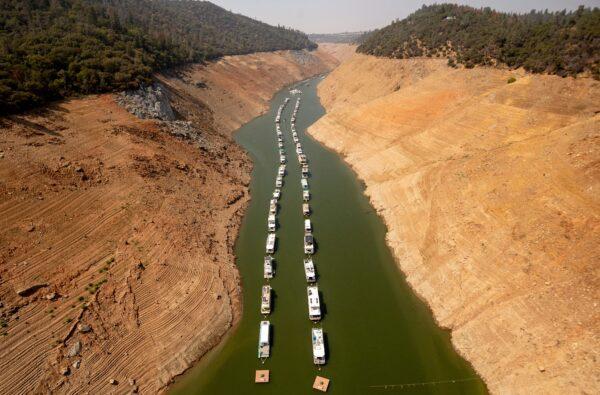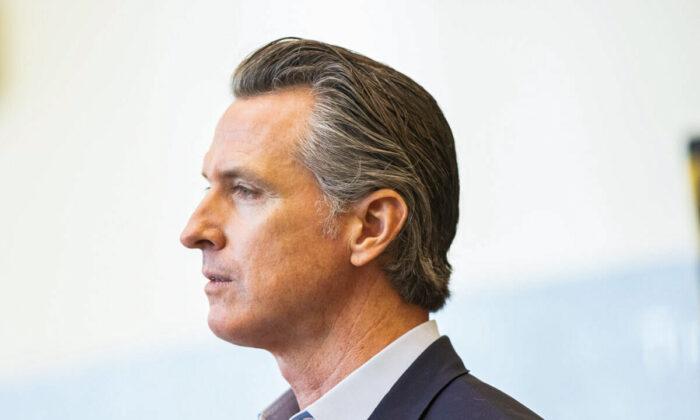California Gov. Gavin Newsom extended a drought emergency declaration across the entire state on Oct. 19, following the second-driest year on record as the state battles with record-low storage in its largest reservoirs.
In a statement on Oct. 19, Newsom, a Democrat, urged Californians to “step up their water conservation efforts” as the Western United States faces a potential third dry year. He said the state is experiencing its worst drought since the late 1800s, as measured by both the lack of precipitation and soaring temperatures.
The emergency declaration allows the State Water Resources Control Board to ban wasteful water practices, such as using water to wash sidewalks and driveways, buildings, and other hard-surfaced areas, except in cases when health and safety are at risk, among others.
It also adds eight counties that weren’t previously included in the drought state of emergency: Imperial, Los Angeles, Orange, Riverside, San Bernardino, San Diego, San Francisco, and Ventura.
Fifty counties were already under the drought state of emergency.
Newsom issued an executive order in July calling on Californians to voluntarily reduce water use by 15 percent compared to 2020 to protect water reserves and complement local conservation mandates.
The governor’s extension of the drought emergency comes after figures show that California reduced water use by just 5 percent in August compared to 2020, 10 percent off the 15 percent goal.
“As the Western U.S. faces a potential third year of drought, it’s critical that Californians across the state redouble our efforts to save water in every way possible,” Newsom said. “With historic investments and urgent action, the state is moving to protect our communities, businesses, and ecosystems from the immediate impacts of the drought emergency while building long-term water resilience to help the state meet the challenge of climate change impacts making droughts more common and more severe.”
The extended drought emergency also requires local water suppliers to implement water shortage contingency plans that are responsive to local conditions and prepare for the possibility of a third dry year.
August 2021 was the driest and hottest August on record since reporting began, and the water year that ended last month was the second driest on record, Newsom said.
The proclamation also authorizes the Governor’s Office of Emergency Services to provide assistance and funding under the California Disaster Assistance Act to support the emergency response and delivery of drinking water and water for public health and safety.
The proclamation stopped short of issuing any statewide conservation mandates.

However, some experts believe mandates would produce better outcomes than voluntary calls across the state.
“We know mandates are more effective than voluntary calls,” said Heather Cooley, director of research at the Pacific Institute, a global water think tank. “It takes time to ramp up, and because of the delay in asking Californians to save water this spring, we are further behind than we should be.”
The package is the largest such investment in state history and includes 24 bills covering everything from tackling wildfire and drought challenges, building climate resilience in communities, promoting sustainable agriculture, and advancing the climate agenda.
It also includes a $1.5 billion Wildfire and Forest Resilience Package that builds on a $536 million early action package from April, ahead of peak fire season. The package also adds an additional $988 million in 2021–22 that will be used to fund projects to reduce wildfire risk and improve the health of forests and wildlands, such as fuel reduction projects and fuel breaks.
The largest amount of funding—$5.2 billion—is being directed toward the Water and Drought Resilience package, which will be used to support immediate drought response and long-term water resilience over three years. This will be done via drought relief projects to secure and expand water supplies, among other things, and the focus will be on small and disadvantaged communities.
California has seen a string of blazes that have burned across the state this summer, exacerbated by worsening drought conditions.






Friends Read Free